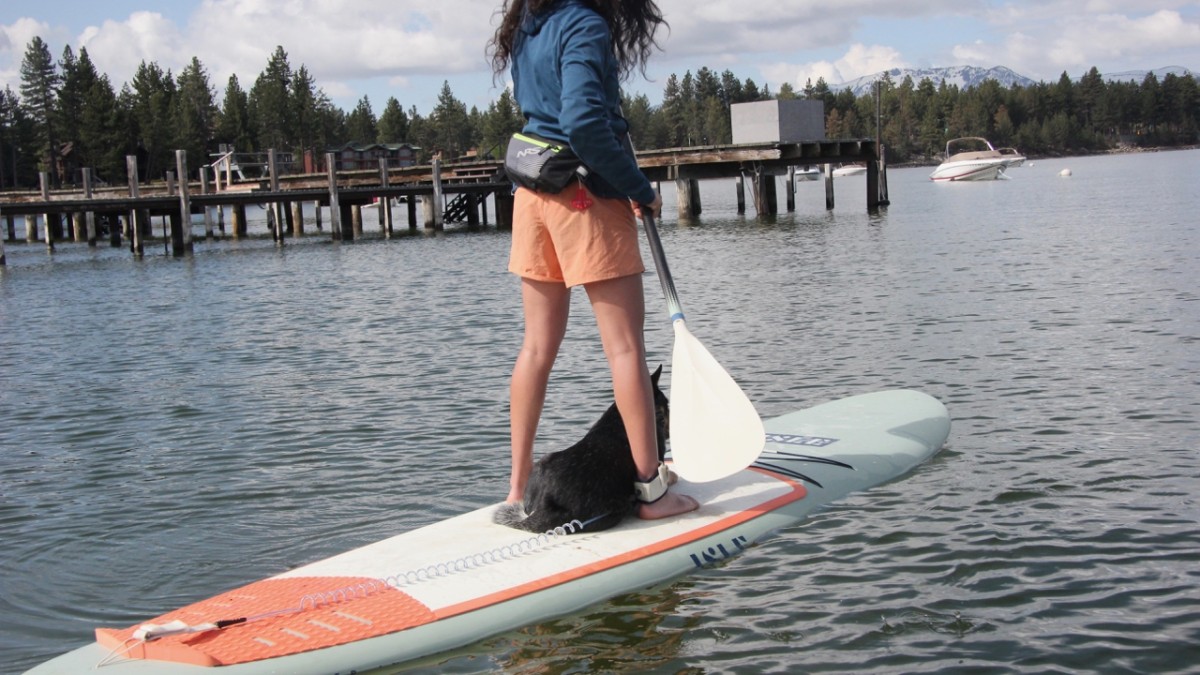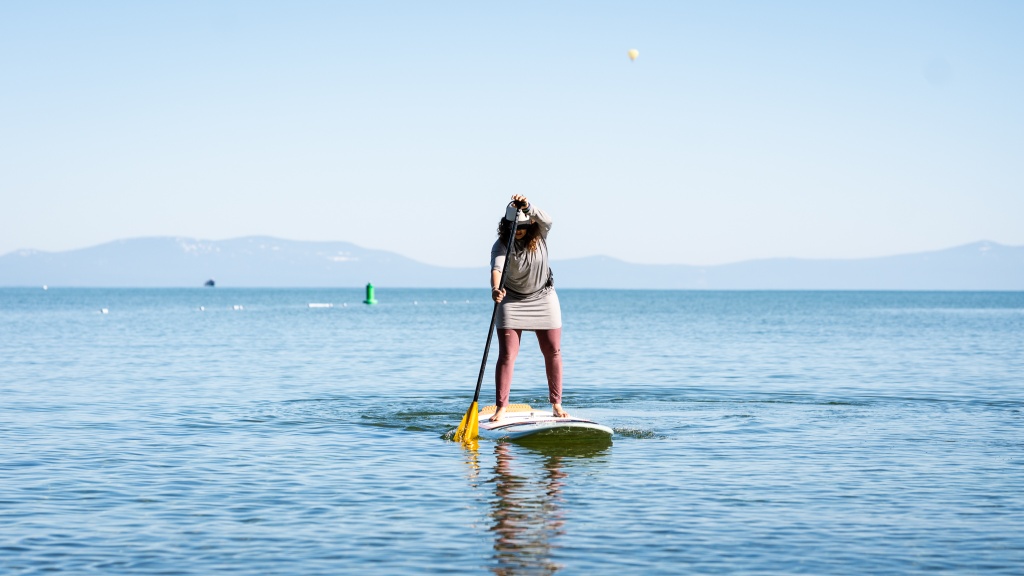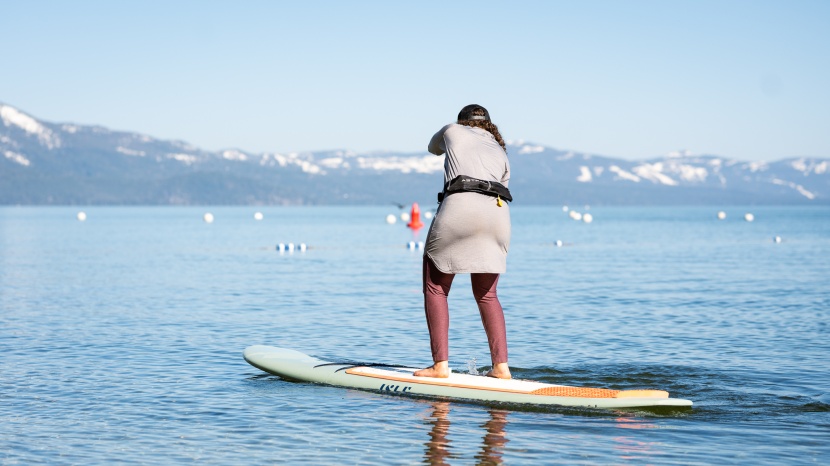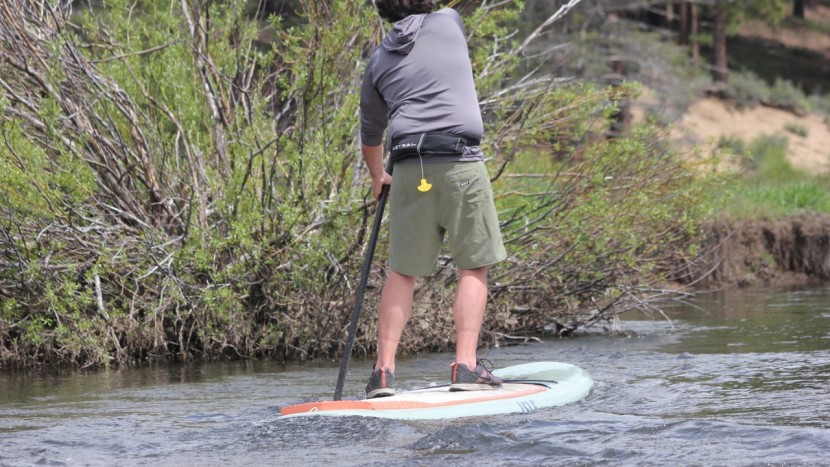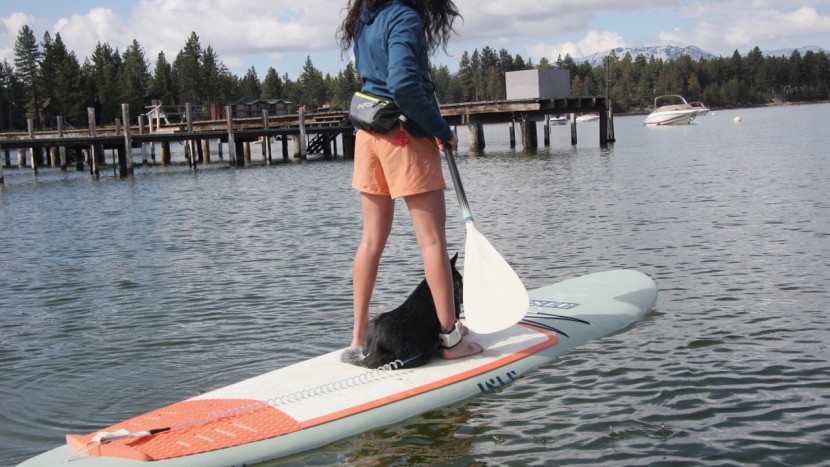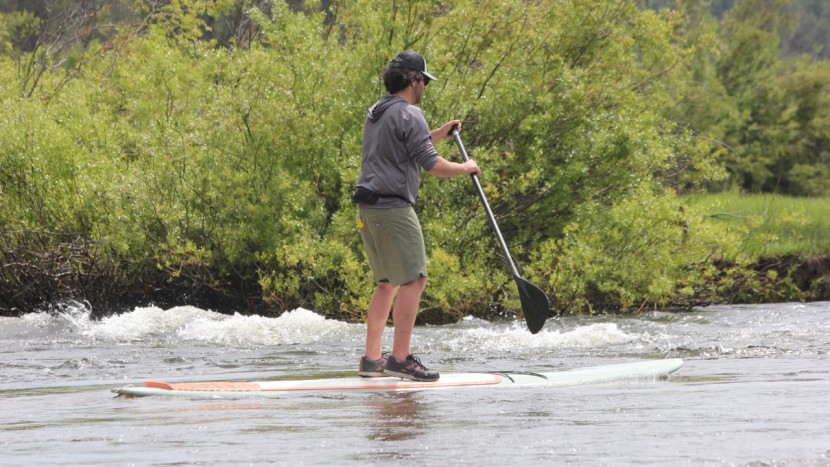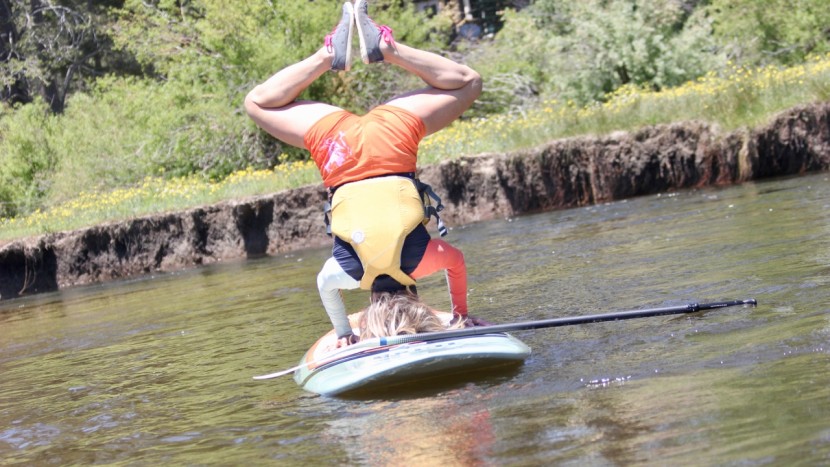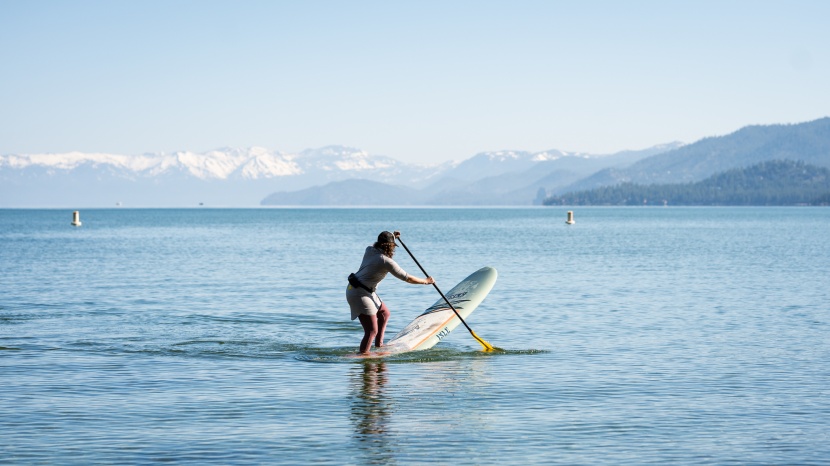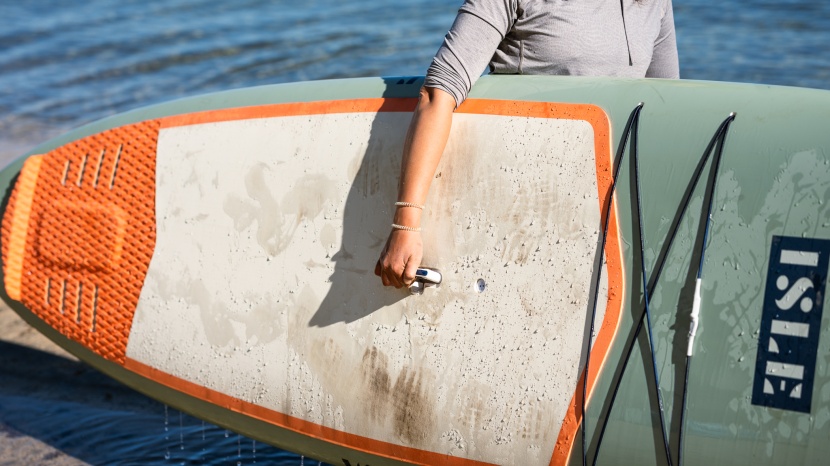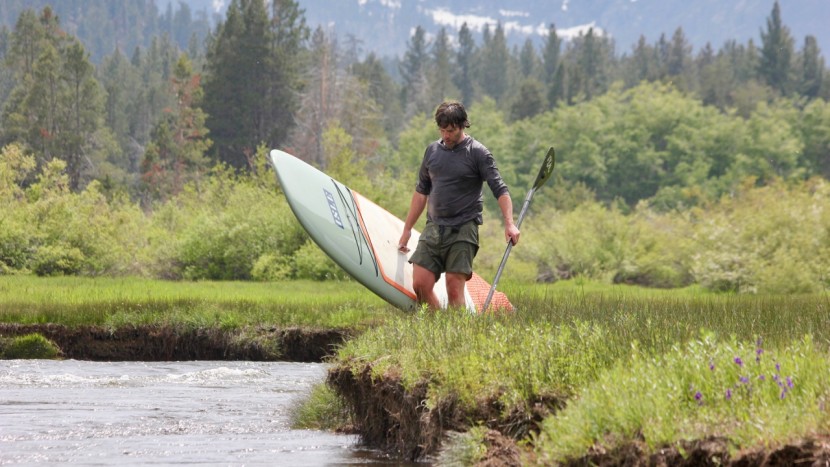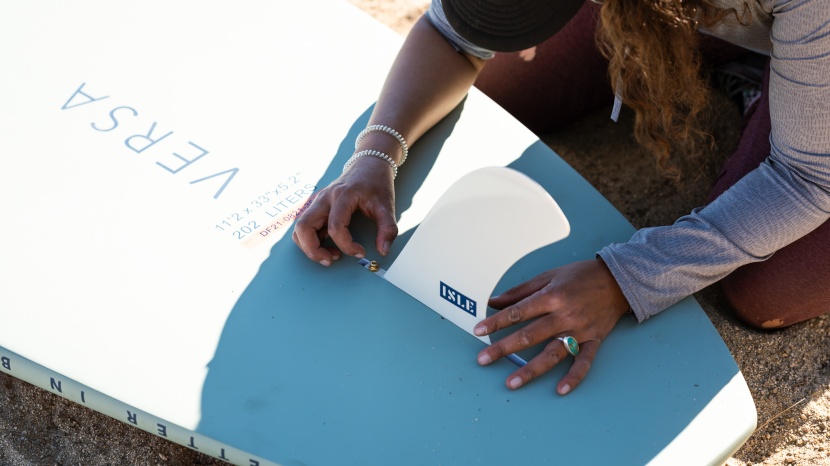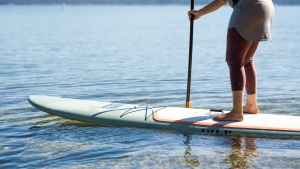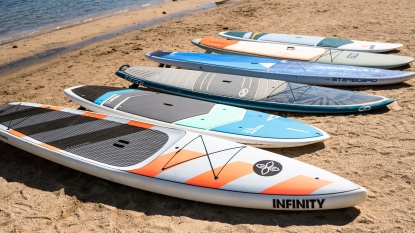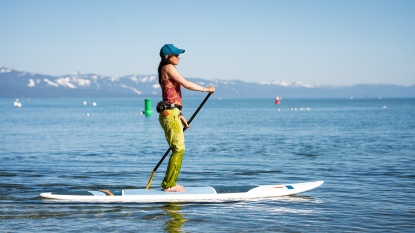
Our Verdict
Compare to Similar Products
 This Product
Isle Versa 2.0 | |||||
|---|---|---|---|---|---|
| Awards | Best Overall Paddle Board | Top Pick for Beginner Paddlers | Best Bang for the Buck | Best Bargain Buy | |
| Price | $1,545 List $1,045 at Amazon | $1,485 List $1,485 at REI | $1,295 List $995.00 at Amazon | $700 List | $410 List |
Overall Score  |
|||||
| Star Rating | |||||
| Bottom Line | If you are searching for a great value SUP, this is a solid option and includes a paddle | For the cream of the crop when it comes to stand up paddle boards, it’s hard to go wrong with the Catalyst | An excellent option for beginner or intermediate paddlers seeking a stable and easily transportable board that doesn't compromise on glide performance | If you want a great bang for the buck when it comes to SUPs, this is a fantastic option | An affordable and durable option for beginner paddlers looking for a board that is stable and will keep up with others |
| Rating Categories | Isle Versa 2.0 | Surftech Catalyst T... | Isle Cruiser 2 | Tahe Beach Performer | Pelican Flow 106 |
| Glide Performance (35%) | |||||
| Stability (25%) | |||||
| Maneuverability (15%) | |||||
| Ease of Transport (15%) | |||||
| Construction Quality (10%) | |||||
| Specifications | Isle Versa 2.0 | Surftech Catalyst T... | Isle Cruiser 2 | Tahe Beach Performer | Pelican Flow 106 |
| Measured Weight | 27.6 lb | 27.0 lb | 27.5 lb | 33.4 lb | 46.0 lb |
| Weight Capacity | 275 lb | 215 lb | 235 lb | 200 lb | 230 lb |
| Measured Width | 33.1" | 32.5" | 32.0" | 31.5" | 32.0" |
| Measured Length | 11' 2" | 11' 2" | 10' 5" | 10' 6" | 10' 5" |
| Measured Thickness | 5.2" | 5.2" | 4.5" | 5.0" | 6.0" |
| Board Volume | 227 L | 203 L | 175L | 185 L | 230 L |
| Fin Configuration | Single detachable center fin | Single detachable center fin | Single detachable center fin | Large detachable center fin with 2 optional side fins | Single detachable center fin (tool required) |
| Bungee Cargo System | Yes | Yes | Yes, double | Yes | Yes |
Our Analysis and Test Results
Glide Performance
Performance in this metric is largely predicated not only on the shape of each SUP but also on its length. We took each board out in both choppy and calm conditions, comparing the glide-per-paddle stroke and the effort necessary to get each SUP up to speed. Overall, the Versa did well.
While this board definitely has far from the pointiest profile we have seen, we were pleasantly surprised at how it performed, particularly in choppier water. It gets up to speed fairly well and glides far enough per stroke that we would be all right taking it on longer tours, though you will be getting considerably more of a workout than with a race or touring-specific SUP.
It tracks well enough that you don't need to alternate sides of the board for every paddle stroke, as long as you make sure that you are doing a J-stroke. We even took this board out on an exceptionally windy day and found that you could make decent progress upwind with substantial waves — something the completely round, flatwater boards can't come close to doing.
Stability
In this set of tests, we not only looked at how stable each board is in inclement or wavy conditions but also how they handle when loaded with additional weight, like kids or cargo. We tried to particularly consider the novice paddler.
This board is available in two sizes, both of which we have tested over the years. The smaller board is 10'5" with a moderate displacement of 175 liters, a width of 32 inches, and a recommended capacity of 215 pounds. This is a bit smaller than many of the other boards, so it can get a bit squirrely if you get close to that weight, either from kids, cargo, or just the weight of the paddler. However, the longer board that we tested more recently has a length of 11'2", which adds about an inch to the width and boosts the capacity to 275 pounds. This adds considerable stability and is something to consider if you worry that you will be getting close — or exceeding — the capacity of a shorter SUP.
While the Versa isn't the widest board in our review, it does handle wakes and waves surprisingly well. It also has enough of a surf profile to catch waves. True, you are probably going to be taking a swim if you let a significant wave hit you broadside, but it does cruise over most waves easily enough if you angle into them.
Maneuverability
Next, we moved on to scoring and evaluating how nimble and agile each board is. We scored each SUP on how confident we were that we could avoid an unexpected obstacle at speed, the ease of the paddle strokes, the number of strokes required to execute a U-turn, and how each board felt while surfing a small wave. The Versa 2.0 takes a bit of work to get up to speed and isn't the easiest to turn of the options in our lineup.
Because the Versa has a slower maximum speed, it's a bit easier to swerve to avoid an obstacle like a sunken log and is stable enough that you usually won't fall off in the process. However, it isn't the surfiest board around, so leaning heavily into turns can definitely dump you into the water, particularly when combined with transverse waves.
Ease of Transport
For this metric, we found the Versa to be a bit better than average. We based this on the weight, length, and ergonomics of the handle. The Versa is actually one of the lightest boards we tested, tipping the scales at just 27.6 pounds.
The Versa has a pop-up handle in the middle that is fairly comfortable to hold. This, combined with the lighter weight of the board, makes it decently easy to carry for short-to-medium distances — perfect for when the parking situation isn't that close to the water. We also weren't as worried about scuffing this board, so the stress of transport became easier as we didn't have to worry about putting dings into our board when loading or strapping it down.
Some users find the pop-up part of the handle to be a bit annoying, especially if you store your board on overhead racks, as it sometimes won't pop out immediately, and you can be left in an awkward position, shaking the SUP to knock it loose. It does, however, provide a secure way to carry the board, as well as an additional point you can use to lock down your board when leaving it on your car top or in your truck trunk.
Construction Quality
For our final testing metric, we looked at the construction quality of each stand-up paddleboard. We considered the materials of the SUPs and the way the board was constructed, as well as analyzing any damage sustained throughout our comprehensive testing process.
Thanks to its composition, this epoxy board is less fragile than we anticipated. It took as many knocks and scrapes as our other epoxy boards, but the damage did not seem to be as prevalent or visible. It has a foam pad to stand on, which also gives it some nice cushioning for transporting your board on roof racks. It did sustain some minor scrapes and scuffs, but nothing you would notice from more than 5 feet away.
Should You Buy the Isle Versa 2.0 ?
All in all, we think the Versa is a good board. It offers decent enough glide performance for longer tours but is still stable enough for windy or wavy conditions. It's maneuverable and easy to carry. This is a good option for most beginner or intermediate paddlers — or anyone who isn't at the point where they want a quiver of specialized SUPs for different conditions.
What Other Stand Up Paddle Boards Should You Consider?
If you would like a board with better overall performance, consider our all-around favorite board, the Surftech Catalyst Tuflite V-Tech. Not only is this board easier to maneuver, but it handles surf waves better and doesn't compromise on glide. If you are looking for something cheaper, take a look at the more-stable Tahe Beach Performer or SIC Maui TAO Fit AT.


